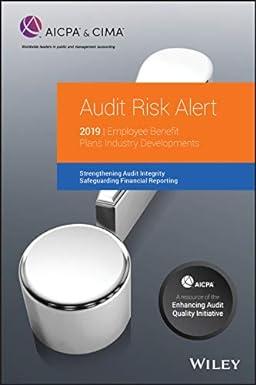Question
Question #1 List and describe the four standards in the IMAs Statement of Ethical Practice. As part of your answer, be sure to provide an
Question #1
List and describe the four standards in the IMAs Statement of Ethical Practice. As part of your answer, be sure to provide an example of an action that violates each of the standards. You should have one example for each of the four standards. When thinking of the examples, remember that external auditors are generally not subject to the IMA Statement.
Question #2
Consider the following information, prepared based on a capacity of 100,000 units:
| Category | Cost per Unit |
| Variable manufacturing costs | $12.00 |
| Fixed manufacturing costs | $3.00 |
| Variable selling costs | $5.00 |
| Fixed selling costs | $2.00 |
Capacity cannot be added in the short run and the firm currently sells the product for $30 per unit.
Consider each of these scenarios independent of each other.
a) The company is currently producing 90,000 units per month. A potential customer has contacted the firm and offered to purchase 10,000 units this month only. The customer is willing to pay $24 per unit. Since the potential customer approached the firm, there will be no variable selling costs incurred. Should the company accept the special order? Why or why not? Be specific.
b) Assume the same facts as in part a, except that the company is producing 100,000 units per month. Should the company accept the special order? Why or why not? Be specific.
c) List and describe other factors (not those addressed in parts a and b) that should be taken into consideration when deciding whether to accept a special order? Be specific in your responses.
Question #3
a) What is life-cycle costing? Under what circumstances can it be most useful? What are some potential problems with using this approach? Be specific in your responses.
Life Cycle Costing is that instrument that considers all the cost involved from procurement and production. In procurement, the main objective is to estimate the lowest cost of ownership of a fixed asset (purchase price, installation, operation, maintenance and up gradation, disposal and other costs) during the economic life of the asset. In terms of manufacturing, the main objective is to determine the production cost as well as the revenue generated from a product. The expenses to be incurred at different stages of the value chain are also determined during the product life cycle. It is considered as useful when there are effective control programs and the whole production process can be ascertained. The main problem with this approach is that it is quite time consuming, expensive and there is always doubt regarding the data accuracy.
b) What is target pricing? Under what circumstances can it be most useful? What are some potential problems with using this approach? Be specific in your responses.
c) What is cost-plus pricing? Under what circumstances can it be most useful? What are some potential problems with using this approach? Be specific in your responses.
Step by Step Solution
There are 3 Steps involved in it
Step: 1

Get Instant Access to Expert-Tailored Solutions
See step-by-step solutions with expert insights and AI powered tools for academic success
Step: 2

Step: 3

Ace Your Homework with AI
Get the answers you need in no time with our AI-driven, step-by-step assistance
Get Started


